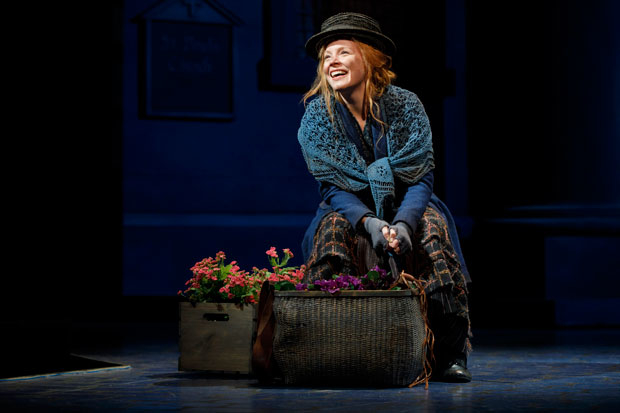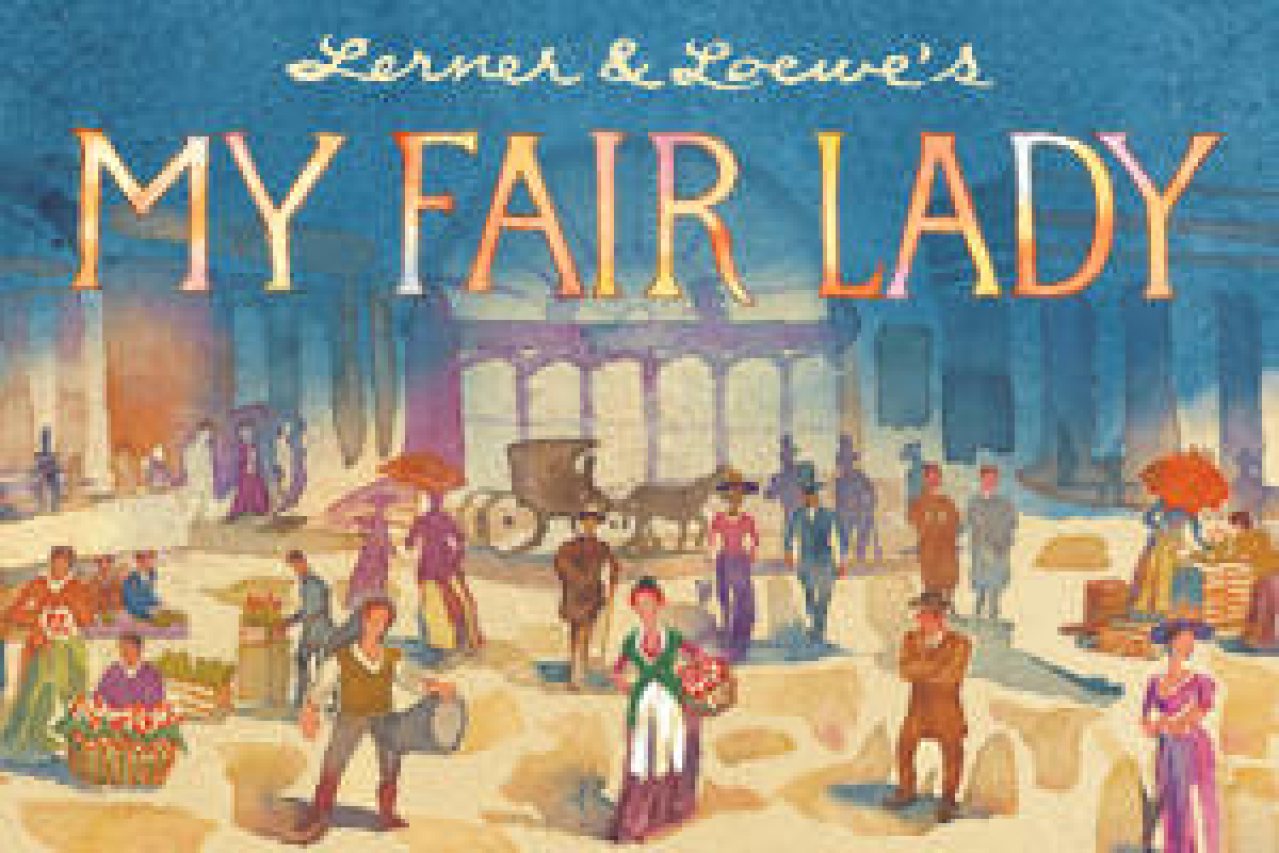A My Fair Lady for the 21st Century

(© Joan Marcus)
For the past decade, director Bartlett Sher and the same core team of designers — Michael Yeargan (sets), Catherine Zuber (costumes), and Donald Holder (lighting) — have given new life to classic musicals. It was impossible not to get lost in the beauty of South Pacific when the stage floor retracted during the overture to reveal the majestic orchestra and the sun set over the beach; equally hard not to sit in awe when Anna waltzed around the stage in The King and I in a billowing lilac gown. Sher and his team are meticulous crafters of theatrical moments that create a gorgeous whole. Their productions simultaneously revere the past while embracing the present.
Lincoln Center Theater's My Fair Lady, starring Lauren Ambrose and Harry Hadden-Paton at the Vivian Beaumont Theatre, is their crowning achievement.
But first things first: How does a story in which a society man who molds a lower-class woman into his version of a proper, respectable "lady" hold up in 2018? In the hands of Sher and leading actors Ambrose (Eliza Doolittle, the Cockney flower seller) and Hadden-Paton (the persnickety phoneticist Henry Higgins), surprisingly well. They haven't reinvented the wheel or excised anything potentially challenging. All they've done, really, is own the material. This iteration of Alan Jay Lerner and Frederick Loewe's musicalization of George Bernard Shaw's play Pygmalion may not be the best sung, but it's infused with genuine emotion from all parties involved.
In fact, what Sher's production does most beautifully is remind us what the plot of My Fair Lady actually is. Sure, Higgins bets Col. Hugh Pickering (Allan Corduner) that he could turn "guttersnipe" Eliza into a person he deems worthy of going to an Embassy ball. What we frequently forget — and it's as apparent in Lerner's musical as it is in Shaw's play — is that Eliza is the one who instigates this transformation. After he meets her in Covent Garden and informs her rather off-handedly that he can teach her to speak properly, Eliza is the one who shows up on Higgins's doorstep because she wants to get off the street.
As Eliza, Ambrose is no shrinking violet. She's tough, weary, and driven , a woman who'll do anything to better her circumstances and attain her "room somewhere, far away from the cold night air." She's an equal match for Hadden-Paton's Higgins, a priggish, myopic man who's less of a misogynist and more of just a plain snob, as any wealthy person who has spent his life in the lap of luxury would be. Neither is a world-class singer (Ambrose's middle range needs a lot of work, while Hadden-Paton has the luxury of being able to speak-sing), but they infuse their big songs with sterling emotional clarity.
Where the production really shines, though, is in the characters' respective transformations. As much as Ambrose's Eliza wants to better herself, she's never quite comfortable in her new surroundings. Pay attention to the way she awkwardly maneuvers around in Zuber's stunningly sophisticated parade of costumes, particularly during the "Ascot Gavotte" and the Embassy Ball. A similar feeling of thoughtful discomfort is present in Norbert Leo Butz's virtuosic comedic performance as her father, Alfred P. Doolittle, a loutish dustman suddenly thrust into middle-class society. Alfred is just as uneasy as Eliza is about rising to a new station in life, but he's going to reap every benefit there is to be had. Butz also proves why "Get Me to the Church on Time" is the greatest showstopper on Broadway.
Meanwhile, Hadden-Paton beautifully charts the course of a Higgins who realizes how empty his life becomes without such a strong sparring partner, but unlike the musical's famous conclusion, Sher's vision of Eliza doesn't let him off as easy as Lerner and Loewe do. It's a shift that Shaw, and the sensibilities of Higgins's own mother, played by the formidable Diana Rigg, would approve of.
For this production, Yeargan has created a world of operatic grandeur that utilizes the full depth of the Beaumont stage. A forced perspective Covent Garden gives way to Higgins's massive, gorgeous full-scale home, which moves from the back of the stage down to the front, sits on a turntable, and rotates around to give us multiple 360-degree views. Holder's lighting accentuates the stage in realistic portraits of daylight and nighttime. Not to be outdone, Marc Salzberg's impressive sound design allows us to hear every single one of Lerner's sparkling lyrics, as well as every single instrument that plays Loewe's infectious score in musical director Ted Sperling's pit.
This My Fair Lady is a revival for the ages, the perfect synthesis of director's vision and performers and designers working completely in sync. I could have watched it all night and still have begged for more.











